
The Boden Haus is a small rammed earth baking studio constructed in Tennessee.

Architecture, Art, Design, and Culture using of mud, clay, soil, dirt & dust.

The Boden Haus is a small rammed earth baking studio constructed in Tennessee.
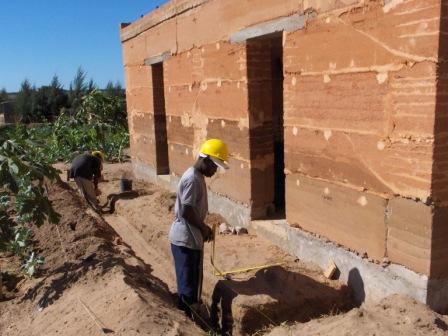
Mumemo is a blog about a training course carried out in Mumemo (Maputo, Mozambique) on earth construction by two Portuguese architects, Miguel Mendes and Teresa Beirao, during May and August 2006. The project was created for the inhabitants of a new village, created as a resettlement for the victims of the massive floods in the year 2000. The course gave students a wide and solid knowledge about earthen construction and three main techniques (rammed earth, adobe, compressed earth blocs) as well as provided them with the ability to direct similar courses in other communities. During the course, a small 50m2 house was built.
John Novotny, a Melbourne resident, has developed a very simple and innovative method of rammed earth construction that results in houses massively cheaper than conventional ones and with amazing environmental benefits.He passionately wants to see this technique widely used to benefit ordinary people and contribute to a better world.
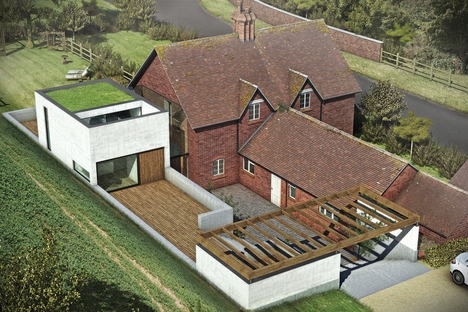
Credit: The White balance
Dan Brill Architects has designed a £50,000 extension to an Edwardian home on the outskirts of Winchester using rammed chalk. The chalk, which makes up the soil of the site was considered as it is a traditional technique in the region and because of the large amount of excavation required to accommodate the addition.
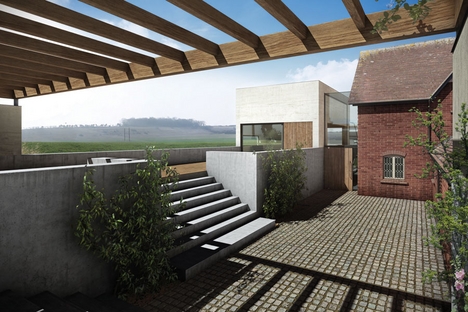
Credit: The White balance
The clients, who wanted something contemporary and innovative, appreciated rammed earth and more so the pristine appearance of the stark, white chalk walls. The material has been used in modern construction in the Pines Calyx project. It was also used in the construction of eight experimental cottages at the Department of Industrial Science and Research at Amesbury between 1919 and 1921. Construction is slated for later this year.
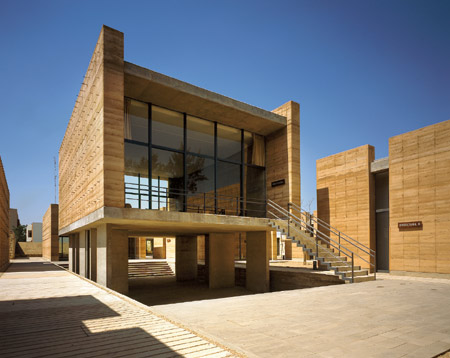
The Oaxaca School of Plastic Arts was designed by Taller de Arquitectura—Mauricio Rocha at the request of artist Francisco Toledo, in collaboration with the Benito Juárez University. An important premise incorporated into the project was the presence on the plot of land of a Mixtec ball game, used on weekends by players.
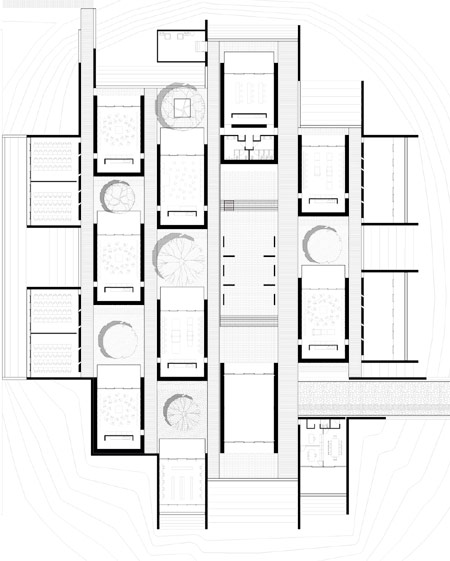
Several campus construction project occurring at the same time made available a tremendous amount of earth, inspiring Rocha to construct several of the buildings within complex out of rammed earth. This enhanced the quality of the exterior courtyards and created a comfortable micro-climate within the building optimal for Oaxaca. Other buildings are made of stone and create a series of inhabitable terraces.
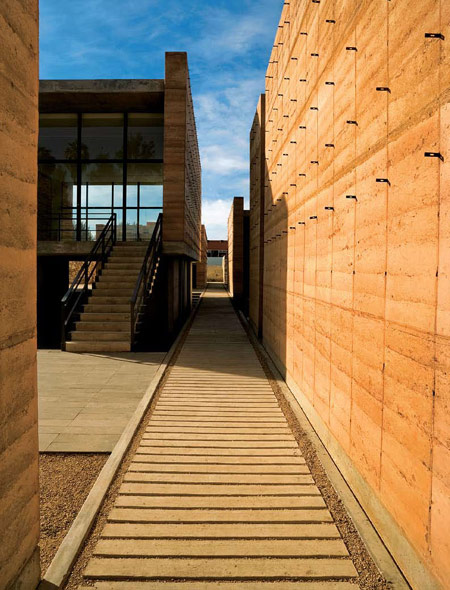
Exterior courtyards suggest a floor layout in the shape of a chessboard, where the alternation between mass and space in the walkways creates a variety of views and paths.
Read more about The Oaxaca School of Plastic Arts.
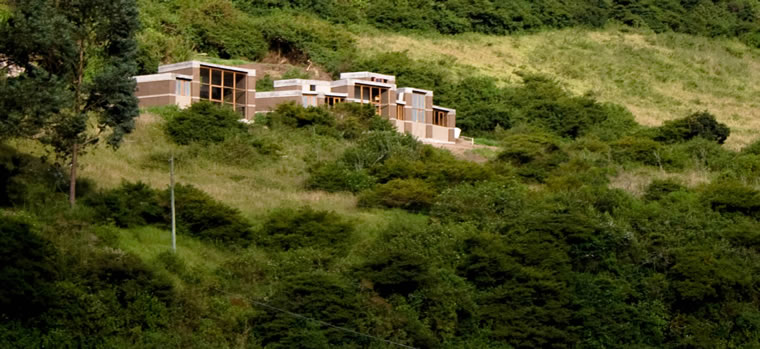
The Casa Entre Muros, built in Tumbaco, Quito, Ecuador and designed by al bordE Arquitectos (David Barragán and Pascual Gangotena), was generated from the starting point: “There is always another way of doing things and another way for living”. Far from the pollution of the city, the house is set in the hillside of the Ilaló volcano in a indomitable land. It’s limited by two streams opened to the landscape of the valley. A cut in the sloping land helps to generate a platform for the project and also to get enough raw material to build the massive party walls.
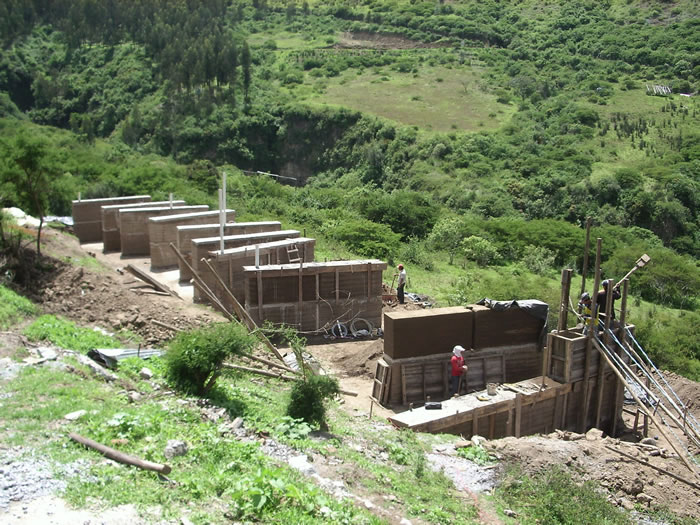
The waving form as a result of this cut in the land, defines the position and order of every wall. The succession of rammed earth walls and the different heights of the roof caused the division of the house even for the activity or the user. To avoid the domino effect, the party walls break their parallelism solving the structure and strengthening the character of each space within. A long corridor is used as an element that isolates the project from their immediate neighbours and reinforces the autonomy of every space.

This architecture aims to highlight the nature of the material elements that compose it, promoting the aesthetic, formal, functional and structural qualities as well as the maximum respect of the environment.
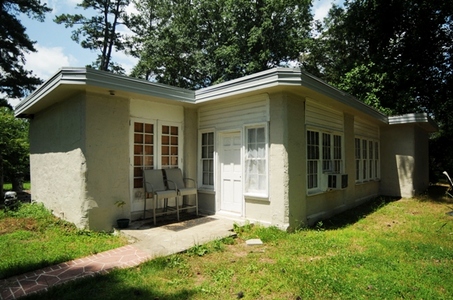
The rammed earth houses on Rosemary Road in Mount Olive, Alabama, were built in the 1930s. They were constructed with dirt, taken from the site, which was mixed with red-rock aggregate and tamped between wooden forms. The homes were built as part of a New Deal Resettlement Administration homestead community. The surprisingly sophisticated one-story houses, designed by architect Thomas Hibben, are reminiscent of the low-slung, prairie-style houses designed by famed architect Frank Lloyd Wright. The government was not sure of the lasting quality of these rammed earth homes and required that they be located at the back of the project, so as to not be too visible if they collapsed, but all the rammed earth houses of Mount Olive are still standing today. Images of the buildings at the time of their construction can be found here.
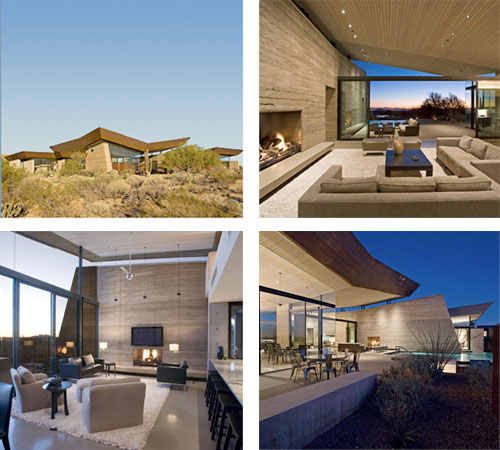
The Redding Residence, designed by Kendle Design Collaborative, is an 8,300-square-foot home located in a gated Scottsdale, Arizona community. The house has won the prestigious Golden Nugget award for custom homes from the Pacific Coast Builders Conference and was featured on the Arizona AIA tour of homes this spring.
The secret of a successful sandcastle could aid the revival of an ancient eco-friendly building technique, according to research led by Durham University. Researchers, led by experts at Durham’s School of Engineering, have carried out a study into the strength of rammed earth, which is growing in popularity as a sustainable building method.
Front Range Earth Architecture: Why and Why Not?, written by Michael Shernick, is a paper that looks at the history and viability of earth architecture on Colorado’s Front Range. Click here to download the paper in PDF format.